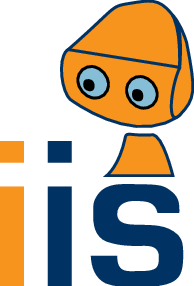research:projects
Differences
This shows you the differences between two versions of the page.
| Both sides previous revision Previous revision | Next revision Both sides next revision | ||
|
research:projects [2017/11/11 13:03] c7031007 |
research:projects [2018/09/07 11:29] 127.0.0.1 external edit |
||
|---|---|---|---|
| Line 14: | Line 14: | ||
| <div style="clear:both"><br></div> | <div style="clear:both"><br></div> | ||
| </html> | </html> | ||
| + | |||
| + | |||
| + | ===== Completed Projects (Selection) ===== | ||
| {{:research:squirrel.png?nolink&200 |}}[[http://www.squirrel-project.eu/|SQUIRREL]] (EU FP7-ICT-STREP, 2014-2018): Clutter in an open world is a challenge for many aspects of robotic systems, especially for autonomous robots deployed in unstructured domestic settings, affecting navigation, manipulation, vision, human robot interaction and planning. SQUIRREL addresses these issues by actively controlling clutter and incrementally learning to extend the robot's capabilities while doing so. We term this the B3 (bit by bit) approach, as the robot tackles clutter one bit at a time and also extends its knowledge continuously as new bits of information become available. SQUIRREL is inspired by a user driven scenario, that exhibits all the rich complexity required to convincingly drive research, but allows tractable solutions with high potential for exploitation. We propose a toy cleaning scenario, where a robot learns to collect toys scattered in loose clumps or tangled heaps on the floor in a child's room, and to stow them in designated target locations. | {{:research:squirrel.png?nolink&200 |}}[[http://www.squirrel-project.eu/|SQUIRREL]] (EU FP7-ICT-STREP, 2014-2018): Clutter in an open world is a challenge for many aspects of robotic systems, especially for autonomous robots deployed in unstructured domestic settings, affecting navigation, manipulation, vision, human robot interaction and planning. SQUIRREL addresses these issues by actively controlling clutter and incrementally learning to extend the robot's capabilities while doing so. We term this the B3 (bit by bit) approach, as the robot tackles clutter one bit at a time and also extends its knowledge continuously as new bits of information become available. SQUIRREL is inspired by a user driven scenario, that exhibits all the rich complexity required to convincingly drive research, but allows tractable solutions with high potential for exploitation. We propose a toy cleaning scenario, where a robot learns to collect toys scattered in loose clumps or tangled heaps on the floor in a child's room, and to stow them in designated target locations. | ||
| Line 20: | Line 23: | ||
| <div style="clear:both"><br></div> | <div style="clear:both"><br></div> | ||
| </html> | </html> | ||
| - | |||
| - | |||
| - | ===== Completed Projects (Selection) ===== | ||
| {{:research:3rdhand.png?nolink&110 |3rdHand}} | {{:research:3rdhand.png?nolink&110 |3rdHand}} | ||
research/projects.txt · Last modified: 2024/02/19 12:24 by Antonio Rodriguez-Sanchez

